Ever wondered what the screens that movies are mastered on look like? They're a lot thicker than TVs, use unique LCD tech, and cost a lot more
What ideal TV tech looks like when money and energy use are no object
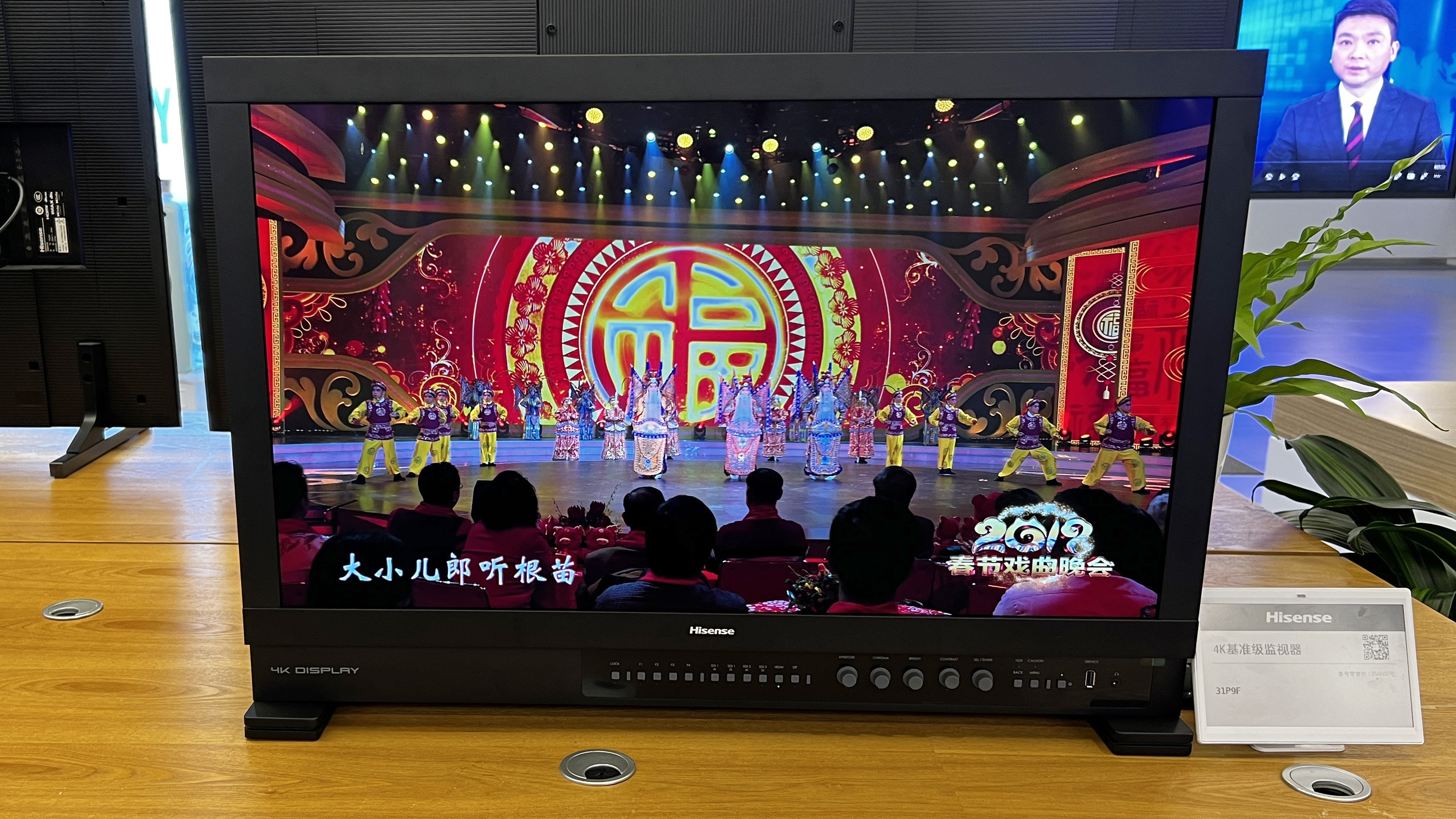
Extreme TV nerds (hello) will sometimes talk about 'mastering' movies and shows, which is the industry term for the look of something being created and settled on by the creative team behind it. 'Mastering' monitors are what are used for this, and they're specialist screens that are designed to be supremely accurate to the picture signal coming into them, so that colorists can perfect the look of a movie with confidence.
They use slightly different screen tech compared to any of the best TVs you can buy, and they're bulky beasts that are interesting to look at – but you don't tend to get to look at them very much. I've never been allowed to take photos whenever I've been in a place with them. Well, until recently, when I visited Hisense's TV R&D lab, and the company was quite happy to show off its pro mastering monitor.
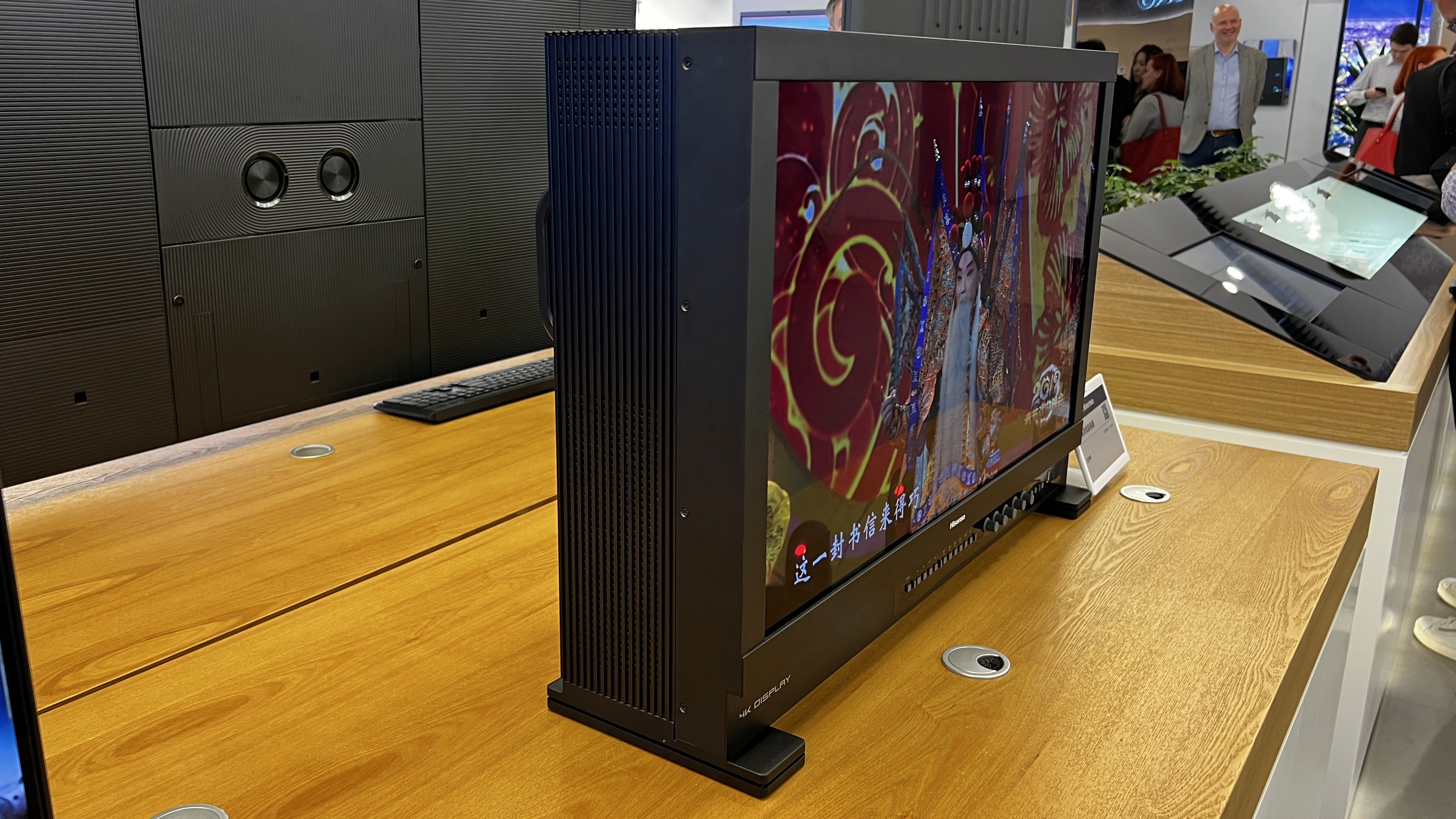
A few companies make mastering monitors, but Sony is probably the most famous for Hollywood use. Hisense's is mainly used in Chinese movie and TV production, but it uses the same kind of tech and is very similar to Sony's in design.
The first thing you'll notice is what I mentioned before – that it's a hell of a boxy thing, with charmingly old-school buttons and controls on the front, including actual dials, which I always love to see on today's tech. They control elements of the visual reproduction, though you wouldn't generally tweak them while in use – you'd get them where you want them, then play with the look of different digital mastering techniques within your editing/production environment.
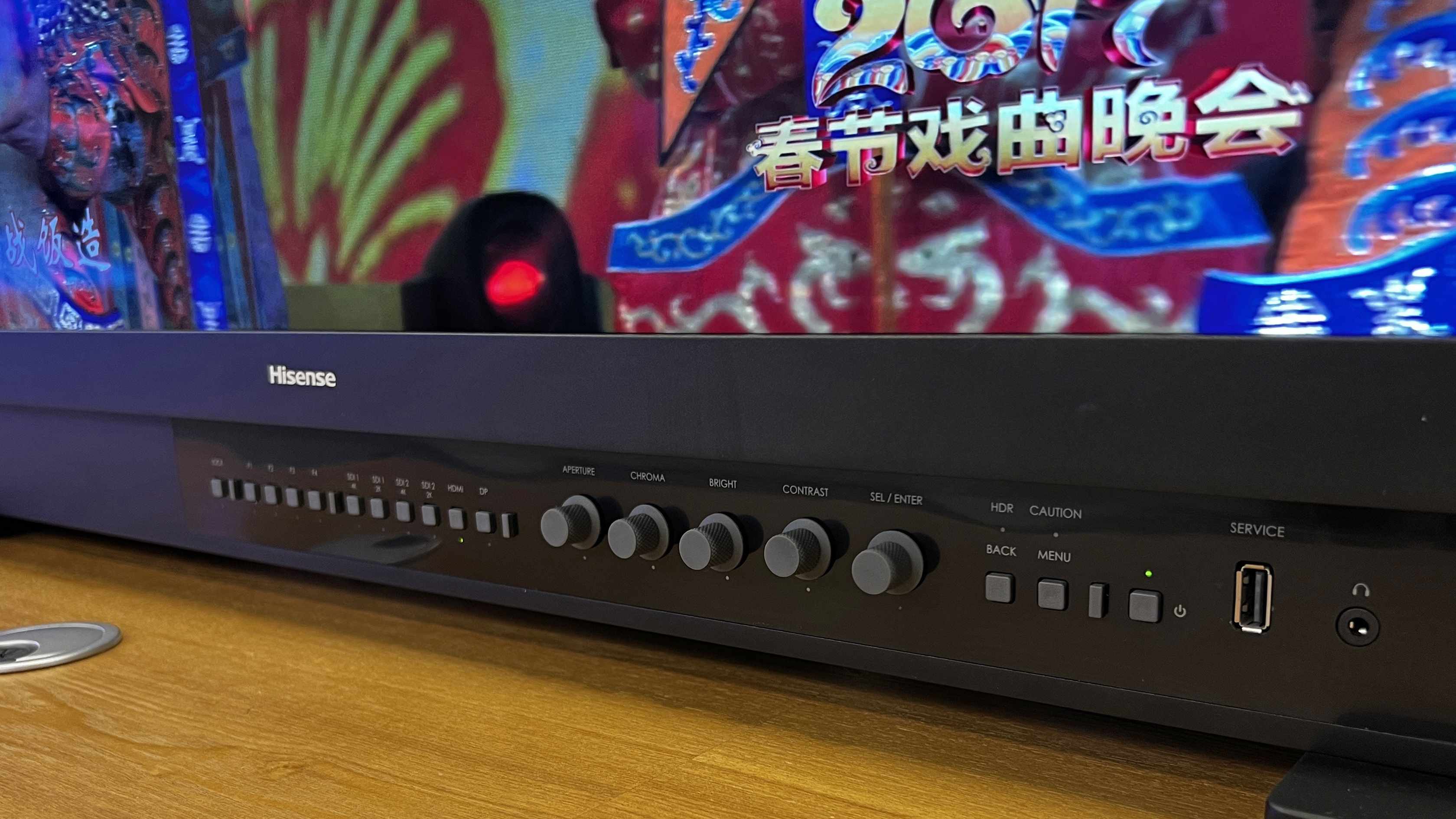
The screen is only around 32 inches, but it's about six inches deep and has two prominent carry handles on the back. The thickness is all about heat dissipation – it has small holes all over the body further back to help with that task.
Why is it so hot? Well, that comes down to the screen tech. This is a 4K resolution dual-LCD panel, capable of producing very nuanced colors and OLED-like pixel-perfect contrast.
It works by placing two LCD panel layers in front of a powerful and perfectly even backlight. To understand why two LCD screens are used, we need to go back to the problem with black tones in LCD, and why the best OLED TVs and the best mini-LED TVs with local dimming have become so popular.
Get daily insight, inspiration and deals in your inbox
Sign up for breaking news, reviews, opinion, top tech deals, and more.
LCD TVs work by having a light behind the pixels shining forward. The LCD layer of liquid crystals changes this light into other colors, so it looks like what it's supposed to. However, the liquid crystals can't do black very well, because black requires the absence of light, and the crystals aren't able to fully block the backlight.
This is why mini-LED TVs use local dimming, meaning they turn their backlight way down (or off) so the LCD panel doesn't have to block as much light; OLED avoids the problem by having pixels that generate their own light, meaning each one can be dimmed to total blackness.
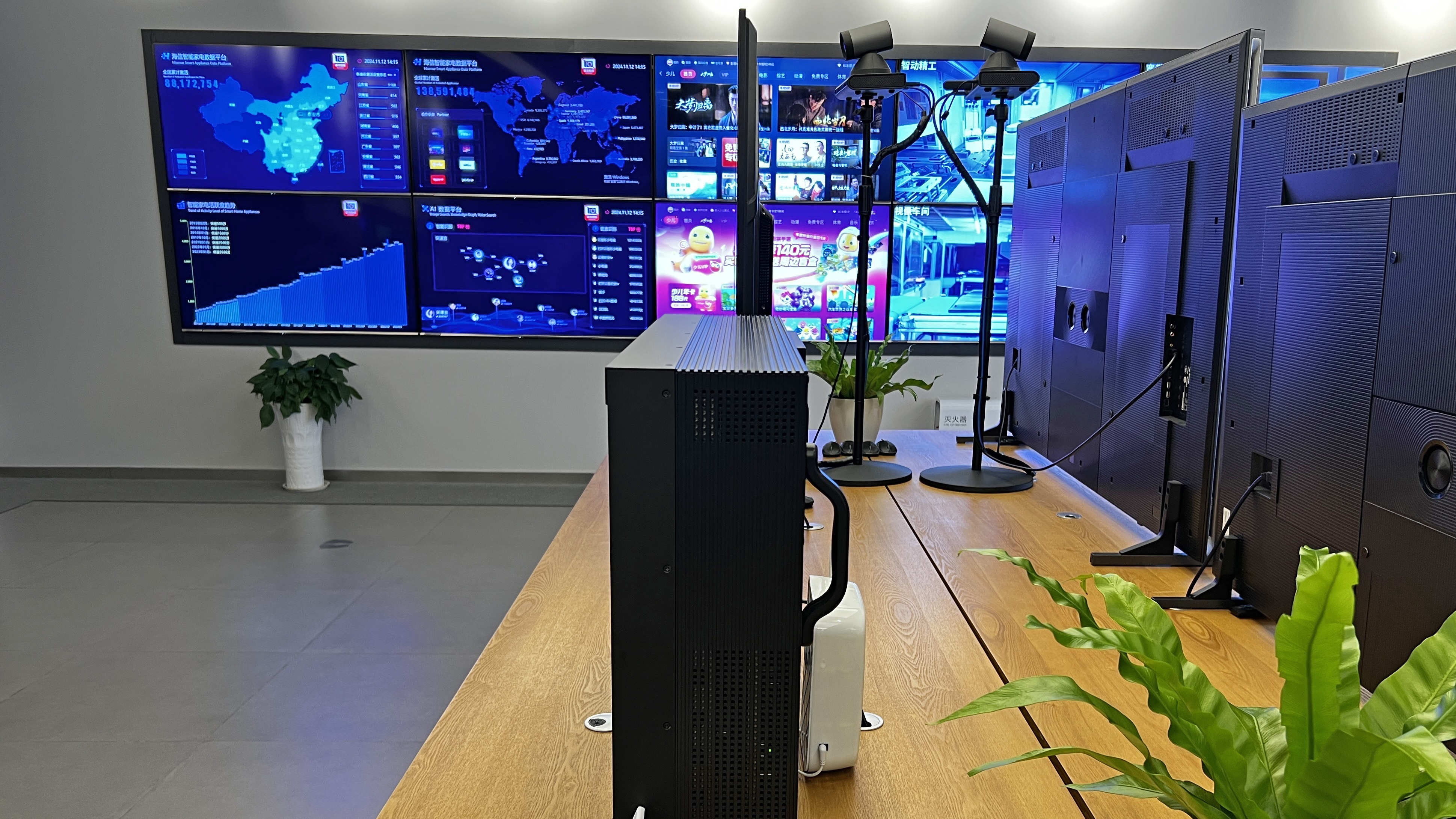
Dual-LCD screens work by having two sets of LCD pixels on top of each other, and in combination, they're able to block all the light they need to – but can also potentially show much brighter images than OLED.
So why don't all LCD TVs use this tech? Because it's devastatingly inefficient. Even ignoring when they're trying to block the light, each LCD layer absorbs a bunch of light as it passes through anyway, so these monitors require a huge amount of power, and generate a huge amount of heat, to hit the same kind of brightness numbers as a mini-LED TV.
Hence the thickness of these monitors, full of bright lights and, therefore, heat sinks to keep them from melting – but no one would want to pay the kind of home energy bill they'd rack up, either.
So dual-LCD is deployed in products like this, where price is not a factor as long as the result is meticulously good. Hisense's reference monitor that I saw costs CN¥250,000 (about $35,000 / £28,000), which is a similar kind of price to Sony's reference monitors.
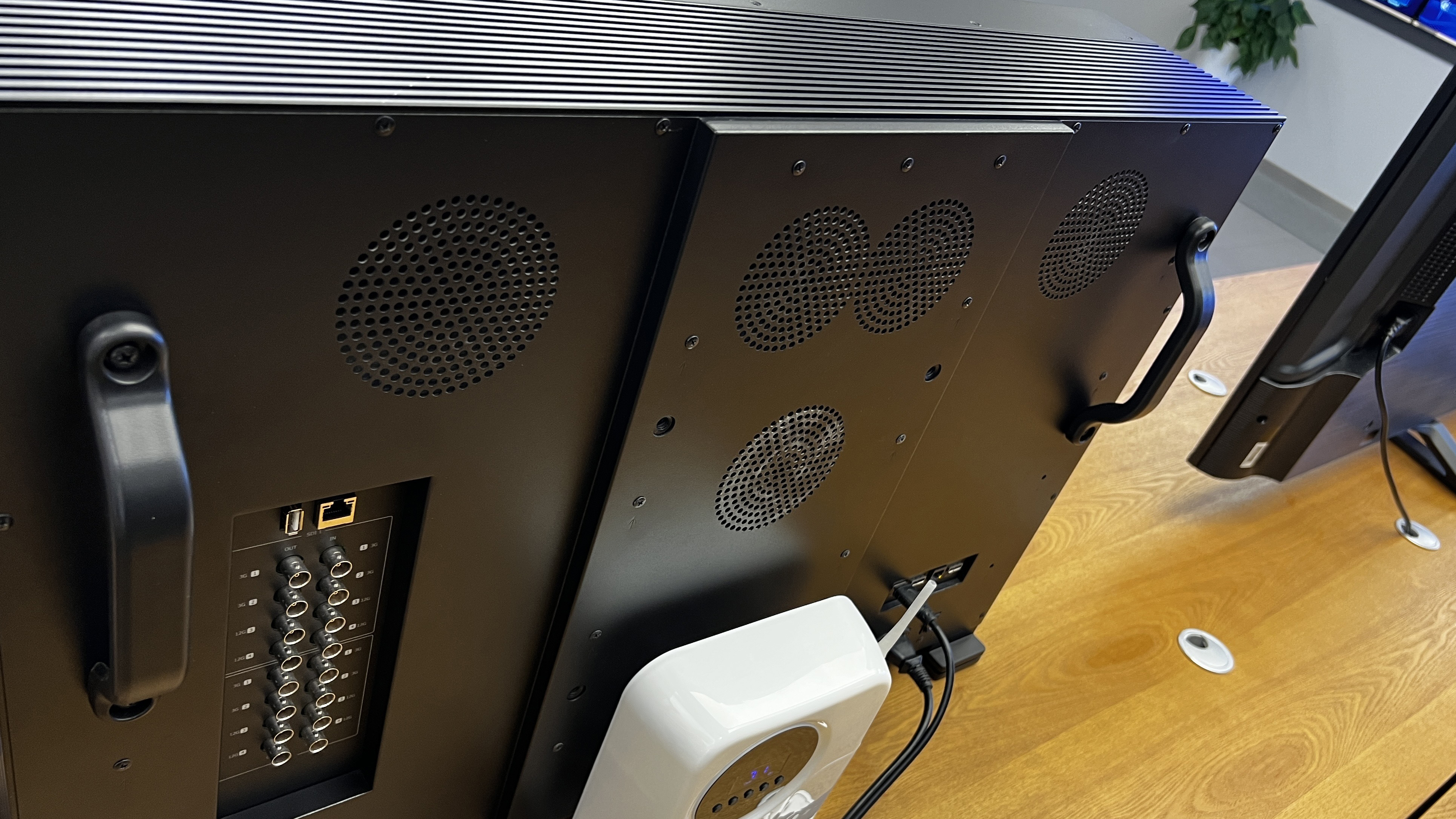
Naturally, you get some other pro-specialist features for these prices, such as a huge range of inputs, and the ability to show multiple images alongside each other for choosing color and contrast grading options or to adjust pixel response times.
I always love to see one of these in action and marvel at how similar to regular TVs the technology fundamentally is, and yet how different the design has to be in order to get to the extra picture quality jump that makes them 'reference' worthy.
You might also like…

Matt is TechRadar's Managing Editor for Entertainment, meaning he's in charge of persuading our team of writers and reviewers to watch the latest TV shows and movies on gorgeous TVs and listen to fantastic speakers and headphones. It's a tough task, as you can imagine. Matt has over a decade of experience in tech publishing, and previously ran the TV & audio coverage for our colleagues at T3.com, and before that he edited T3 magazine. During his career, he's also contributed to places as varied as Creative Bloq, PC Gamer, PetsRadar, MacLife, and Edge. TV and movie nerdism is his speciality, and he goes to the cinema three times a week. He's always happy to explain the virtues of Dolby Vision over a drink, but he might need to use props, like he's explaining the offside rule.